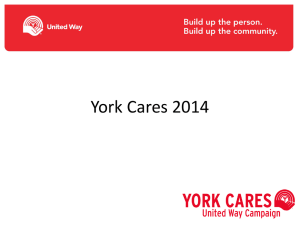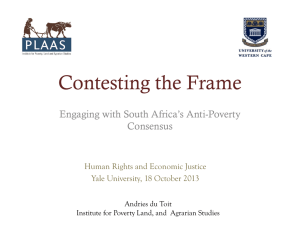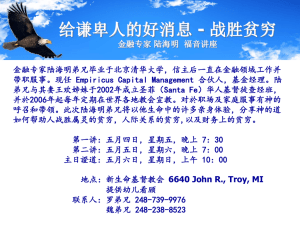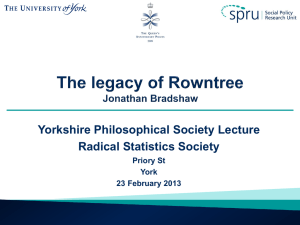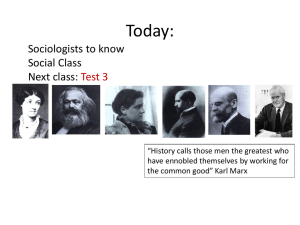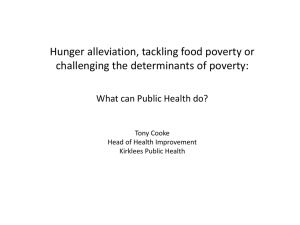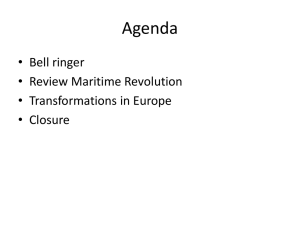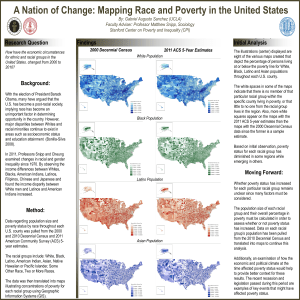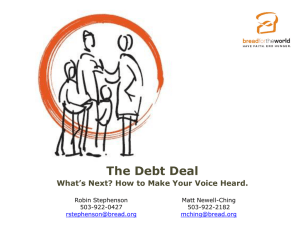Slide 1 - Clover
advertisement
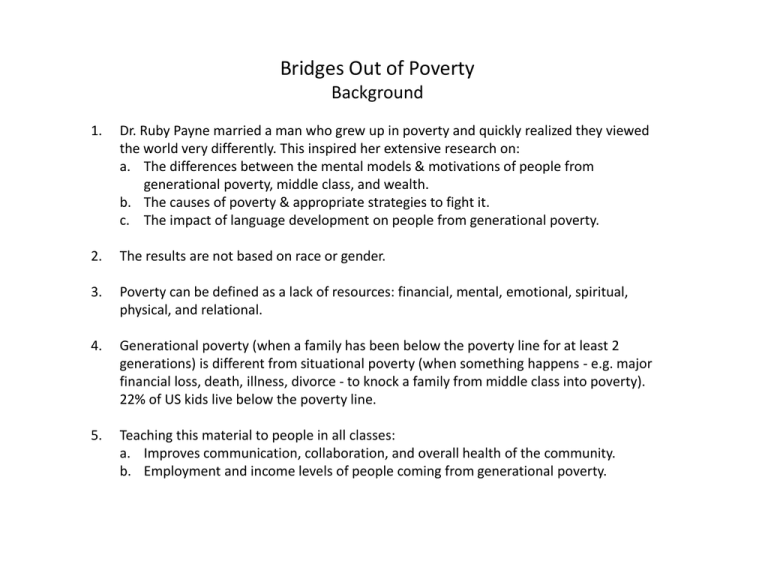
Bridges Out of Poverty Background 1. Dr. Ruby Payne married a man who grew up in poverty and quickly realized they viewed the world very differently. This inspired her extensive research on: a. The differences between the mental models & motivations of people from generational poverty, middle class, and wealth. b. The causes of poverty & appropriate strategies to fight it. c. The impact of language development on people from generational poverty. 2. The results are not based on race or gender. 3. Poverty can be defined as a lack of resources: financial, mental, emotional, spiritual, physical, and relational. 4. Generational poverty (when a family has been below the poverty line for at least 2 generations) is different from situational poverty (when something happens - e.g. major financial loss, death, illness, divorce - to knock a family from middle class into poverty). 22% of US kids live below the poverty line. 5. Teaching this material to people in all classes: a. Improves communication, collaboration, and overall health of the community. b. Employment and income levels of people coming from generational poverty. Bridges Out of Poverty Poverty vs. Middle Class and Wealth 1. People in generational poverty are almost always in the mode of “the tyranny of the moment” to survive. People in the middle class and wealth generally have the luxury of planning ahead. a. Children who grow up in poverty are generally not taught the process of planning ahead which can also lead to a disconnect between choices and their consequences. b. This also causes people in poverty to generally think and talk in concrete rather than abstract terms. c. Because of “the tyranny of the moment,” an abundance of single parent households, lack of healthy role models, etc., children in poverty do not develop the “formal language register” and story structure that will help them succeed in middle class. 2. Schools, police, social services, and church are generally run from a middle class mindset. There is often a disconnect for people in poverty. Bridges Out of Poverty “Hidden Rules” Poverty Middle Class Wealth Bridges Out of Poverty Causes of Poverty and Appropriate Strategies 1. There are four main categories of causes that contribute to poverty: A. B. C. D. 2. Behaviors of the individual Absence of human and social capital Human exploitation Political & economic structures Research has been done around dozens of topics in those four categories that has led to recommended strategies for each. A comprehensive continuum of strategies covering all four areas is needed. Bridges Out of Poverty Possible Next Steps 1. Teach these principles to your congregation, volunteers, and/or ministry partners in the form of: a. Workshops based on the mental models, hidden rules, etc. b. A “What Every Church Member Should Know About Poverty” Bible Study. c. A “Bridges Out of Poverty” book study. d. A “Bridges Out of Poverty” seminar (requires certification). 2. If you don’t already have programs or partnerships in place to help people break out of the cycle of poverty, assess your community and your own assets. Unite can help you do that. Consider the following ideas: a. Facilitating a “Getting Ahead” class. You are now qualified to do that. b. Providing allies for existing “Getting Ahead” classes or other empowerment programs. c. Offering life skills classes such as financial management (e.g. New Focus), marriage & parenting classes, communication classes. d. Coming alongside another church in an impoverished community to offer some of the above programs and more. e. Getting involved in efforts to increase affordable housing, provide living wages. 3. If you do already have programs partnerships, evaluate them in light of these learnings. 4. Coordinate your efforts with other churches serving in the same area (i.e. with Unite). This is too big of a job for one church to handle alone. God created each churches with a unique SHAPE just like He created each Christian. When we all do our part and coordinate our efforts, we’re functioning as a much more healthy body of Christ.
